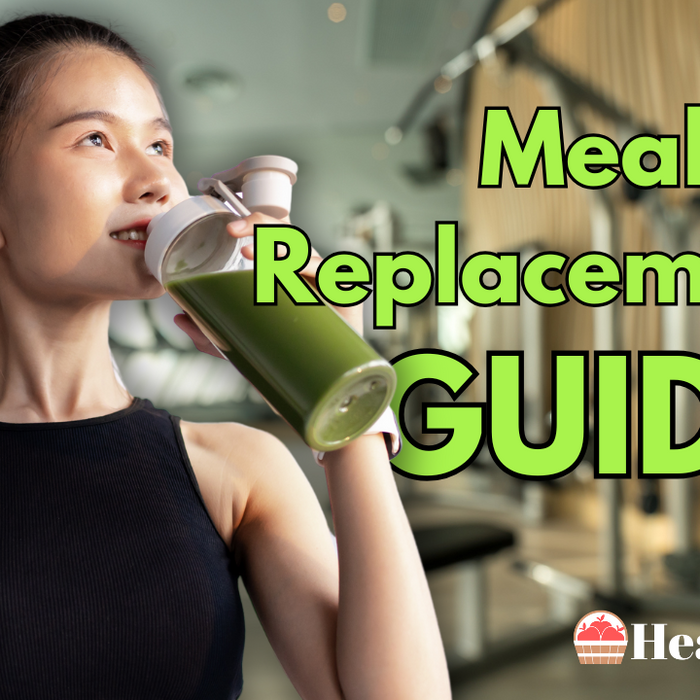

Children's DHA & Omegas: Guide
Key Takeaways
- DHA is Crucial for Development: DHA is a key Omega-3 fatty acid essential for brain, eye, and overall growth in children.
- Omega-3s Come From Diet and Supplements: Omega-3 fatty acids must be obtained through foods like fatty fish, seeds, or supplements since the body cannot produce them.
- DHA Supports Cognitive and Visual Health: Adequate DHA intake improves memory, focus, and vision by supporting brain and retina development.
- Omega-3s Boost Immunity and Mood: These fatty acids strengthen the immune system and may help regulate mood and behavior in children.
- Choosing the Right Product is Important: When considering supplements, look for purified, high-quality options appropriate for your child’s age and needs.
- Safety and Dosage Matter: Follow recommended dosages and consult healthcare professionals to ensure your child gets the right amount of DHA safely.
Omega-3 fatty acids, particularly DHA (docosahexaenoic acid), are essential nutrients that play a vital role in your child's health and development. With 60% of the human brain composed of fat and DHA being a key component, these nutrients are crucial for brain function, cognitive growth, and overall development during early childhood years.
At Health Orchard, we're committed to helping parents navigate the journey of ensuring their children get the nutrients they need. This guide explores the role of DHA and Omega-3s, their significant benefits, and practical ways to incorporate them into your child's daily routine, whether through dietary sources or supplementation.
What are DHA and Omega-3s?
What is DHA?
DHA, or docosahexaenoic acid, is a long-chain Omega-3 fatty acid that is critical for the development and function of the brain and eyes. It is a primary structural component of the brain's gray matter and the retina, making it indispensable for cognitive and visual processes. In fact, DHA accounts for about 97% of the Omega-3 fatty acids found in the brain and 93% in the retina, emphasizing its importance in neural and visual health.
During early childhood, DHA is essential for building and maintaining brain cell membranes, which directly influence neuron communication. This is why DHA plays such a significant role in early brain development, learning, and memory. Beyond childhood, it continues to support brain health, reducing the risk of cognitive decline later in life.
What are Omega-3s?
Omega-3 fatty acids are a group of essential fats that the human body cannot produce on its own, requiring them to be obtained through diet or supplements. They are categorized into three primary types: ALA (alpha-linolenic acid), EPA (eicosapentaenoic acid), and DHA (docosahexaenoic acid). Each type serves unique functions, with ALA primarily serving as a precursor to EPA and DHA, although the body’s conversion rate is low.
EPA and DHA are primarily found in marine sources, with DHA being particularly crucial for brain and eye health. ALA, found in plant-based foods like flaxseeds and chia seeds, offers a vegetarian-friendly source of Omega-3s but is less directly impactful for cognitive and visual functions. For children, obtaining sufficient DHA is vital because it directly supports their rapid physical and neurological growth phases.

Dietary Sources of DHA and Omega-3s
Fatty Fish
The richest sources of DHA and EPA are fatty fish, such as:
- Salmon: Fresh or canned wild salmon provides one of the highest concentrations of DHA and EPA per serving.
- Mackerel: This oily fish offers exceptional levels of omega-3s while being low in mercury content.
- Sardines: These small fish pack a powerful omega-3 punch and are also rich in vitamin D and calcium.
Plant-Based Sources
For families seeking vegetarian or vegan options:
- Flaxseed: Ground flaxseed provides substantial ALA omega-3s and can be easily added to smoothies, oatmeal, or baked goods.
- Chia seeds: These tiny seeds are packed with ALA omega-3s and can be incorporated into puddings, smoothies, or used as egg substitutes.
- Walnuts: These nuts contain the highest amount of ALA among all nuts and make an excellent snack or recipe ingredient.
Fortified Foods
Certain foods are fortified with DHA and Omega-3s:
- Milk: Many dairy and plant-based milks are now fortified with DHA to help meet daily requirements.
- Yogurt: Fortified yogurt provides a combination of omega-3s, protein, and beneficial probiotics.
- Eggs: DHA-enriched eggs come from hens fed a special diet rich in omega-3s, resulting in higher DHA content.
Food Vs. Supplements
While whole food sources like fatty fish, walnuts, and flax seeds provide omega-3s along with other beneficial nutrients like protein, vitamins, and minerals that work synergistically in the body. For children who are picky eaters or follow restricted diets that limit natural omega-3 sources, high-quality supplements can help bridge nutritional gaps under healthcare provider guidance. However, supplements should complement rather than replace efforts to include omega-3-rich foods in the diet, as the complex interactions between nutrients in whole foods often enhance their benefits.
Benefits of DHA and Omega-3s for Children
Cognitive Development
DHA is a critical building block of the brain, comprising a substantial portion of its structure and influencing its overall function. Research has shown that children with adequate DHA levels tend to perform better on tests measuring cognitive abilities like memory, attention, and problem-solving skills. This fatty acid helps strengthen neuron membranes, which enhances communication between brain cells, improving learning capacity.
Moreover, DHA plays a role in reducing neuroinflammation, which can affect cognitive function. Studies suggest that DHA supplementation may help children who experience attention deficit issues or learning challenges. By supporting early brain development, DHA contributes to a foundation for long-term mental health and academic success.
Visual Health
DHA is a major component of the retina, where it contributes to maintaining the integrity and function of photoreceptor cells. These cells are responsible for capturing light and sending visual signals to the brain, making DHA vital for sharp and clear vision. During infancy and childhood, adequate DHA intake ensures proper visual development and may help prevent issues like poor visual acuity.
Studies have found that children with higher DHA levels often have better visual performance, especially in terms of processing and clarity. Beyond supporting structural development, DHA has also been linked to protecting eye health by reducing oxidative stress and inflammation. Incorporating DHA-rich foods or supplements can promote optimal visual health as children grow.
Immune System Support
Omega-3s, including DHA and EPA, play a crucial role in modulating the immune system and reducing inflammation. In children, these fatty acids help the body develop a balanced immune response, which is essential for fighting off infections and illnesses. By reducing chronic inflammation, Omega-3s can also help lower the risk of conditions such as asthma or eczema in some children.
Furthermore, DHA has been found to enhance the function of certain immune cells, such as B-cells and T-cells, which are key players in the body’s defense mechanisms. This immune-boosting property is especially valuable for growing children, who are often exposed to various pathogens in schools or childcare settings. Regular intake of Omega-3s supports a robust and adaptable immune system throughout childhood.
Mood and Behavior
Omega-3s, particularly DHA, have been associated with regulating mood and supporting emotional well-being in children. Research suggests that children with sufficient Omega-3 intake may experience fewer symptoms of anxiety, depression, and behavioral issues. These fatty acids are thought to influence neurotransmitter function, promoting better communication within the brain’s emotional centers.
In addition to mood regulation, Omega-3s may help address symptoms of hyperactivity and impulsivity often seen in conditions like ADHD. Studies indicate that children with behavioral challenges tend to have lower levels of DHA and EPA in their systems. Supplementing with Omega-3s can help promote calmness, focus, and overall emotional balance, enhancing a child’s quality of life.
Supplements for Children: Pros and Cons
When to Consider Supplements
Children with restricted diets, including picky eaters, vegetarians, or those with food allergies, may need omega-3 supplements to meet their nutritional needs when dietary sources are limited. Healthcare providers often recommend supplements for children showing signs of deficiency or those with conditions that may benefit from increased omega-3 intake, such as ADHD or inflammatory conditions. The decision to supplement should always be made in consultation with a pediatrician who can assess your child's specific nutritional needs and recommend appropriate dosing based on age, weight, and overall health status.
Types of Omega-3 Supplements
- Fish Oil: These supplements provide concentrated DHA and EPA in liquid or capsule form, making them a widely accessible and effective option.
- Algal Oil: This plant-based supplement derived from algae offers pure DHA without animal products, making it ideal for vegetarians and those avoiding fish.
What to Look for on Labels
- Purity: High-quality supplements should clearly state their testing protocols for contaminants like mercury, PCBs, and other heavy metals.
- Dosage: The label should specify age-appropriate serving sizes and the exact amount of DHA and EPA per serving.
- Certifications: Look for products that have been tested by independent organizations like USP, NSF, or IFOS for quality verification.
Common Concerns
- Taste: Many brands now offer flavored options or special coatings to minimize fishy taste and make supplements more appealing to children.
- Allergens: Carefully review ingredient lists for potential allergens like fish, soy, or other common triggers that might affect sensitive individuals.
- Mercury Content: Quality manufacturers will provide documentation showing their purification processes and testing for mercury removal.
Recommended Dosages and Safety Tips
Suggested Daily Intake
The recommended daily intake of DHA varies by age:
- Infants (0-12 months): 0.5 grams/day
- Children (1-8 years): 0.7 grams/day
- Older children and teens: 1.0-1.2 grams/day
How to Introduce DHA Safely
Begin with a conservative dose of DHA supplements and gradually increase to the recommended amount while carefully monitoring for any digestive issues or allergic reactions. Work with your healthcare provider to establish the appropriate dosage based on your child's age, weight, and dietary intake of omega-3s through food sources. Choose high-quality supplements specifically formulated for children that have been tested for purity and contaminants, and consider liquid formulations or chewable options that are easier for children to take.
Signs of Overconsumption or Deficiency
- Overconsumption: Taking too much omega-3 can lead to digestive issues like bloating, diarrhea, or fishy burps, along with potential blood thinning effects.
- Deficiency: Common symptoms include dry, flaky skin, poor concentration, mood changes, and fatigue, particularly in growing children.
Choosing the Right Product
Factors to Consider
- Form: Options include chewables, liquids, and soft gels, with each form having different absorption rates and convenience levels for different ages.
- Brand Reputation: Look for established manufacturers that have third-party testing, transparent ingredient sourcing, and consistent quality control measures.
Synthetic Vs. Natural Omega-3s
Natural omega-3 sources like fish oil and algae-derived supplements typically offer better absorption and bioavailability than synthetic alternatives. The complex structure of natural omega-3s includes beneficial co-factors and complementary nutrients that enhance their effectiveness in the body. Marine-sourced omega-3s also contain the optimal ratio of EPA to DHA, making them more efficient at supporting brain development and overall health.
Consult Healthcare Professionals
A pediatrician can evaluate your child's specific nutritional needs and recommend appropriate omega-3 supplementation based on factors like age, diet, and health conditions. Professional guidance ensures proper dosing and helps identify potential interactions with medications or existing health conditions. Regular monitoring by healthcare providers can help adjust supplementation strategies as your child grows and their nutritional needs change.
Conclusion
DHA and Omega-3 fatty acids play a crucial role in children's brain development, eye health, immune function, and overall well-being. While these nutrients can be obtained through food sources, supplements can help ensure your child receives adequate amounts, particularly during critical growth periods.
Health Orchard provides a comprehensive platform to compare high-quality Omega-3 supplements from trusted retailers like Amazon, Walmart, and iHerb. Our curated selection helps you make informed decisions about your child's nutrition while finding the best value, making it easier to invest in their healthy development. Visit Health Orchard today to browse our range of nutritional products and give your child the foundation they need to thrive.
Frequently Asked Questions about Children's DHA & Omegas
1. Do kids need DHA and omega-3?
Yes, children require DHA and omega-3 fatty acids for proper brain development, cognitive function, and visual acuity. These essential nutrients play crucial roles in neural development, learning ability, and overall growth. The body cannot produce these compounds naturally, so they must be obtained through diet or supplements.
2. What are the side effects of children's DHA?
Common side effects of DHA supplements in children may include fishy burps, bad breath, stomach upset, or loose stools. In rare cases, children might experience allergic reactions. High doses could increase bleeding risk. Most children tolerate DHA well when taken as directed, but it's important to follow recommended dosages.
3. At what age can a child take omega-3?
Children can safely start taking omega-3 supplements from 6 months of age, though breast milk and formula often contain adequate amounts for infants. After age 2, children can take specific child-formulated omega-3 supplements under pediatric guidance. Dosage requirements increase with age and should be adjusted accordingly.
4. Is it safe to take DHA every day?
Daily DHA supplementation is generally safe when taken in appropriate doses. For children, recommended daily intake varies by age: 0-12 months need 0.5g, 1-3 years need 0.7g, and 4-8 years need 0.9g of omega-3s total. Always consult healthcare providers for personalized dosing recommendations.
5. What are the symptoms of low DHA in children?
Signs of DHA deficiency may include poor concentration, learning difficulties, vision problems, mood changes, sleep issues, and delayed development. Physical symptoms can include dry skin, brittle nails, and frequent infections. However, these symptoms can indicate various conditions, so professional evaluation is necessary.
6. What is the best source of DHA for children?
Fatty fish like salmon, mackerel, and sardines are excellent natural sources of DHA. For non-fish eaters, algae-based supplements provide a vegetarian alternative. DHA-fortified foods, including some brands of eggs, milk, and yogurt, can also contribute to daily intake. Quality supplements are another reliable option.
7. Which foods are rich in omega-3?
Rich sources of omega-3s include fatty fish (salmon, mackerel, herring), flaxseeds, chia seeds, walnuts, and hemp seeds. Plant sources primarily contain ALA, which converts to DHA/EPA less efficiently. Fortified foods like eggs from chickens fed omega-3-rich diets also provide these essential fatty acids.
8. Is omega-3 good for speech delay?
Research suggests omega-3 fatty acids, particularly DHA, may support speech and language development in children. While not a cure for speech delays, adequate omega-3 intake supports overall brain development and cognitive function, which can positively influence speech and communication skills.
9. Is DHA safe for kidneys?
DHA supplementation is generally safe for healthy kidneys when taken in recommended doses. However, people with kidney disease should consult healthcare providers before starting supplements, as they may need modified dosages. High-dose fish oil supplements could affect blood clotting in some cases.
10. Does Omega help kids focus?
Research indicates omega-3 fatty acids can support attention, concentration, and cognitive performance in children. Several studies suggest improved focus and reduced hyperactivity symptoms in children supplemented with omega-3s, particularly those with attention difficulties. However, results vary among individuals.
References
- Healthline, “Should Kids Take Omega-3 Supplements?”, October 2019.
- MedicalNewsToday, “Are omega-3s safe for children?”, June 2021.
- Nutrients (MDPI), “The Relationship of Docosahexaenoic Acid (DHA) with Learning and Behavior in Healthy Children: A Review”, July 2013.
- Healthgrades, “Should Kids Take Omega-3 Supplements? What to Know”, November 2023.
- WebMD, “Who Needs Omega-3s?”, March 2011.
- Academy of Nutrition and Dietetics, “Do Kids Need Omega 3 Fats?”, July 2020.
- Early Human Development, “Does antenatal supplementation with omega-3 affect child development and behavior during the first six months of life?”, January 2023.
- Maternal & Child Nutrition, “Essential fats: how do they affect growth and development of infants and young children in developing countries? A literature review”, September 2011.
- Current Treatment Options in Psychiatry, “Essential Fatty Acids for Childhood Mental Health Disorders”, March 2015.
- Brain Research, “Dietary omega 3 fatty acids and the developing brain”, October 2008.







